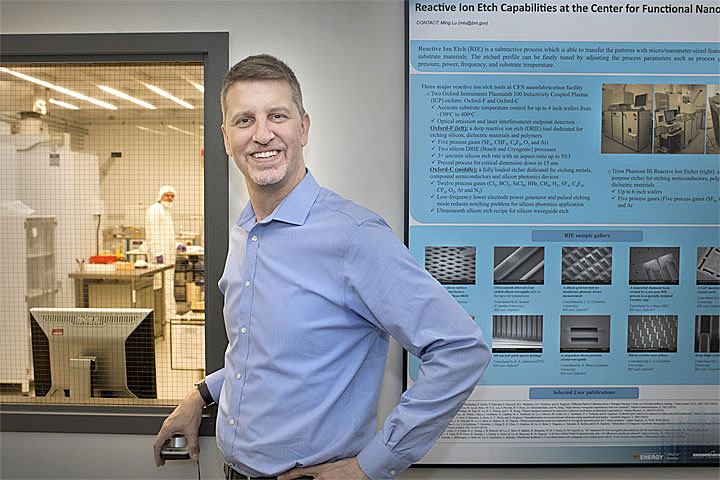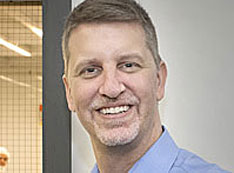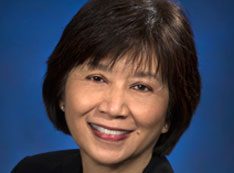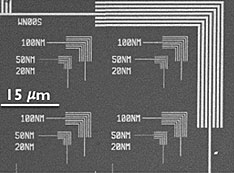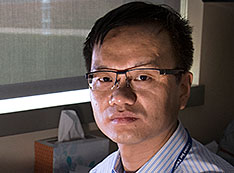A Message from Chuck Black
insights from the CFN Director
January 15, 2020
I am writing this note early in the new year while at home for a few days, where I’m resting, recharging, and reflecting on the year just finished and the progress we have made.
As a nanoscience community, we can be proud of many accomplishments in 2019:
We supported the research of 593 users—the most ever for the CFN in a single year. We invested nearly $4M in new nanoscience capabilities. We hired talented new staff members, postdoctoral scientists, and graduate student researchers who are the vital lifeblood of fresh ideas. And we hosted a panel of external reviewers for a three-day onsite assessment of CFN operations. After meeting with CFN staff, users, and advisory committee members, the reviewers identified some areas where the CFN can improve, but they also strongly praised our community of nanoscience users and our impact on the field.
I am proud of these accomplishments; however, in some ways, they are only the most visible evidence of the central tenet that is key to everything the CFN does: cooperation. Our accomplishments are made possible because we believe that, by working together, we can accomplish bigger and better things than we could ever do as individuals.
But why exactly do we cooperate? Isn’t it true that nature abides by the principle of “survival of the fittest,” or everyone for themselves? As a staff, we talked in depth about this question during our CFN retreat last fall.
One answer is that, of course, it’s the CFN’s job to cooperate with users. But I believe that’s only a small part of the answer. Interactions within the CFN community go much deeper beyond a transactional level.
Last summer, I read about the foundational work of University of Michigan Prof. Robert Axelrod, who is best known for his work on cooperation theory and is author of the most highly cited political science paper ever written. Prof. Axelrod wrote about his research in detail in his book The Evolution of Cooperation.
For his research, Prof. Axelrod studied game theory and the Prisoner’s Dilemma—a simplified situation in which two fictional people encounter each other and must choose whether to cooperate, or not cooperate, without knowing which option the other will choose. In this game, the payoffs for both players depend on the choices that both people make. In the Prisoner’s Dilemma, logic dictates that no person ever cooperates with the other, even though this lack of cooperation produces a suboptimal result for both people. So, when faced with this situation, the question is, why would anyone ever choose to work together?
Axelrod’s research showed that the scenario changes dramatically when a person knows that multiple encounters with the other are likely. In other words, people are more likely to cooperate when in a long-term relationship—or even if you feel there’s a chance that you’ll meet again in the future. In this situation, Axelrod showed that the most effective strategy for success is something called “Tit-for-Tat,” which simultaneously rewards cooperation and avoids exploitation.
With only a few simple rules, this strategy is very easy to follow:
- Be nice. Begin each encounter by cooperating.
- Be provocable but commensurate. Stand up for yourself.
- Be forgiving. Don’t hold a grudge. Cooperate again as soon as it’s offered, even if someone has wronged you previously.
- Be clear. Be obvious about your intentions; don’t play games.
- Don’t be envious. You’re not trying to “beat” the person you’re interacting with; you’re trying to get the best result from the given situation.
I think you’ll agree that these rules sound like ones that our parents or elementary school teachers may have taught us. I find it profound that the same moral lessons we learned as kids turn out to be the mathematically optimal way to deal with others. In fact, Tit-for-Tat is so successful that it encourages others to use it. In this way, a culture of cooperation and collaboration can spread.
As we move into 2020, I know that the CFN cooperative nanoscience model will continue to serve as the foundation for everything we do. I can’t wait to see the important discoveries that CFN users and staff, working together, will make this year.
—Chuck Black
CFN Director
2020-17014 | INT/EXT | Newsroom




